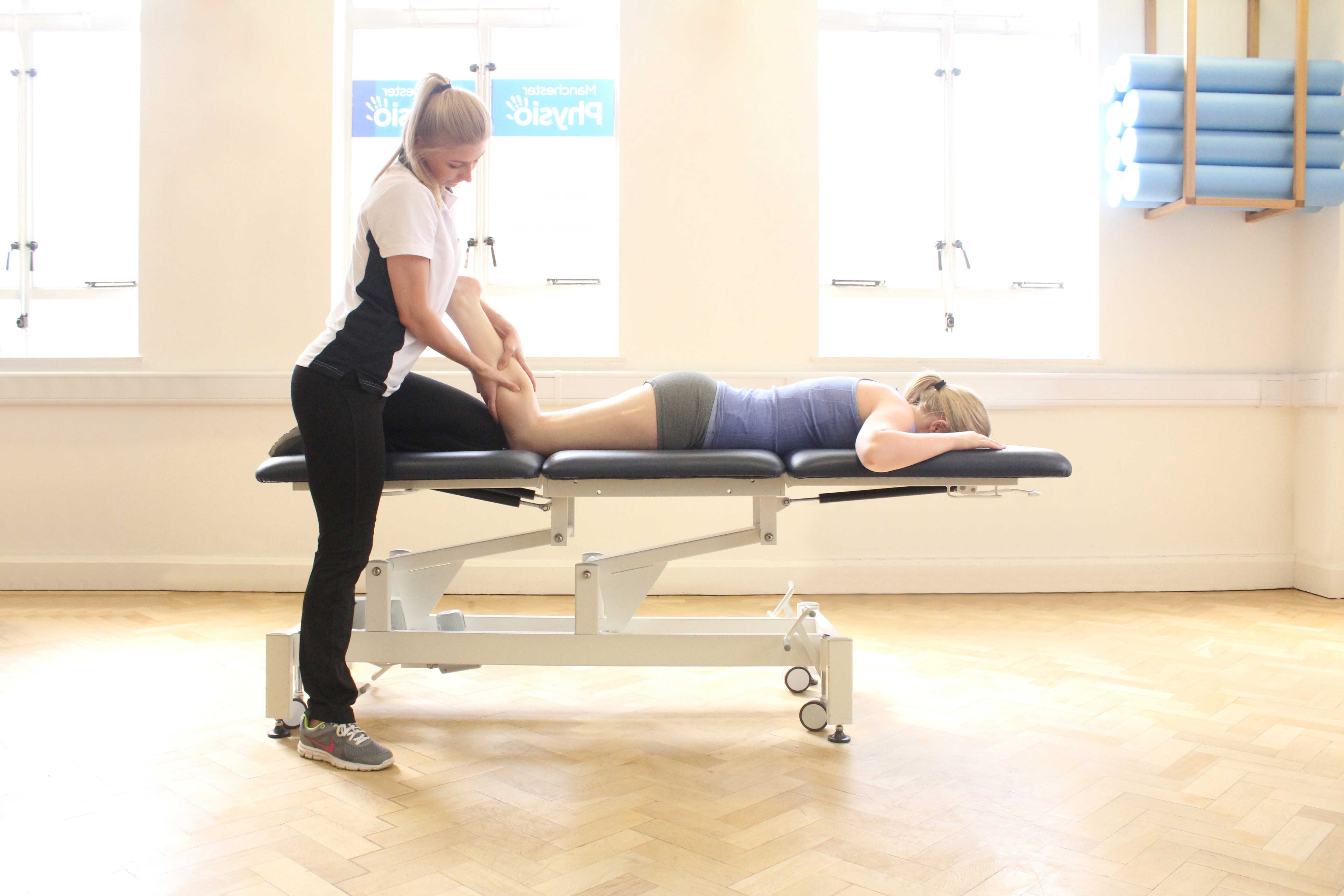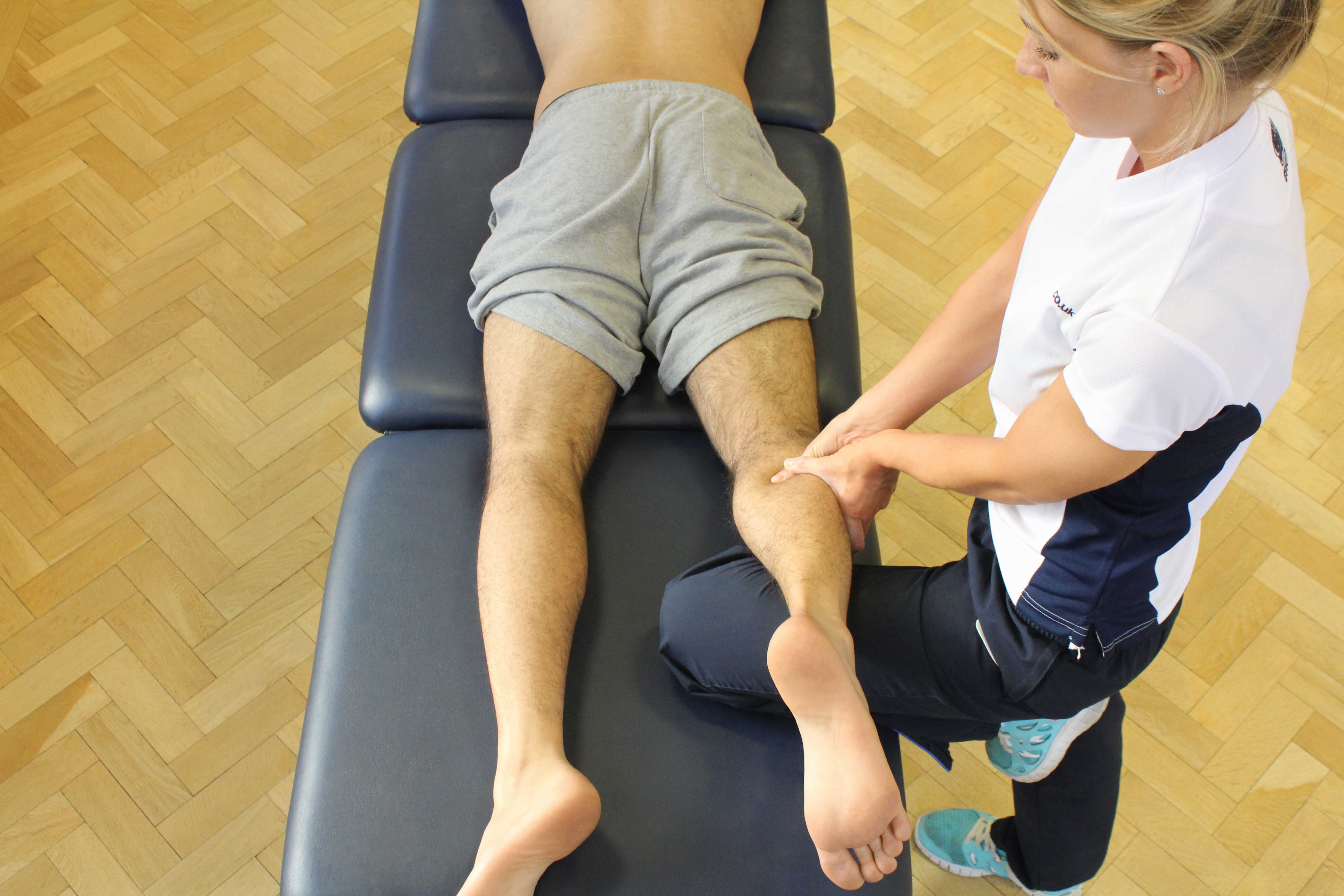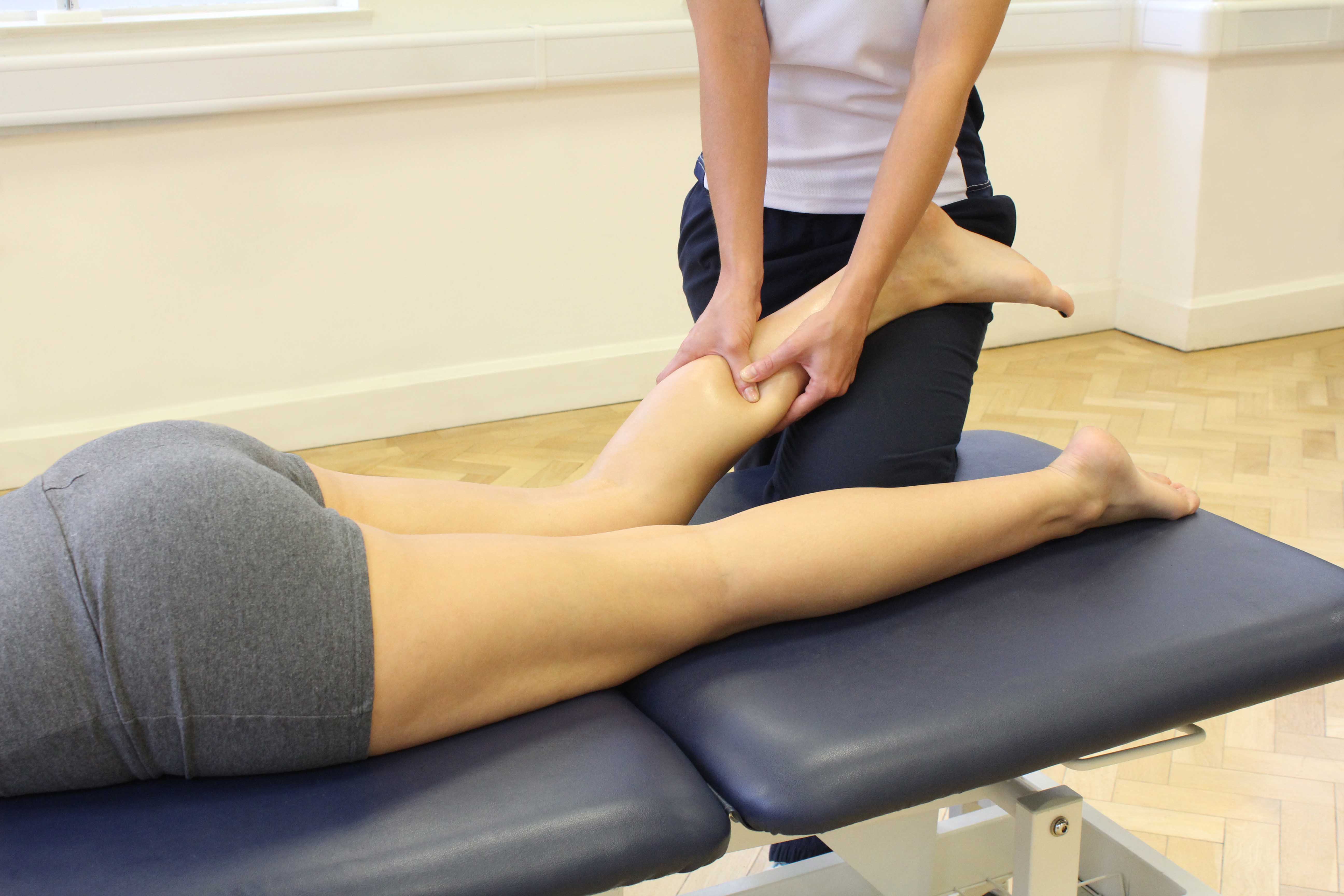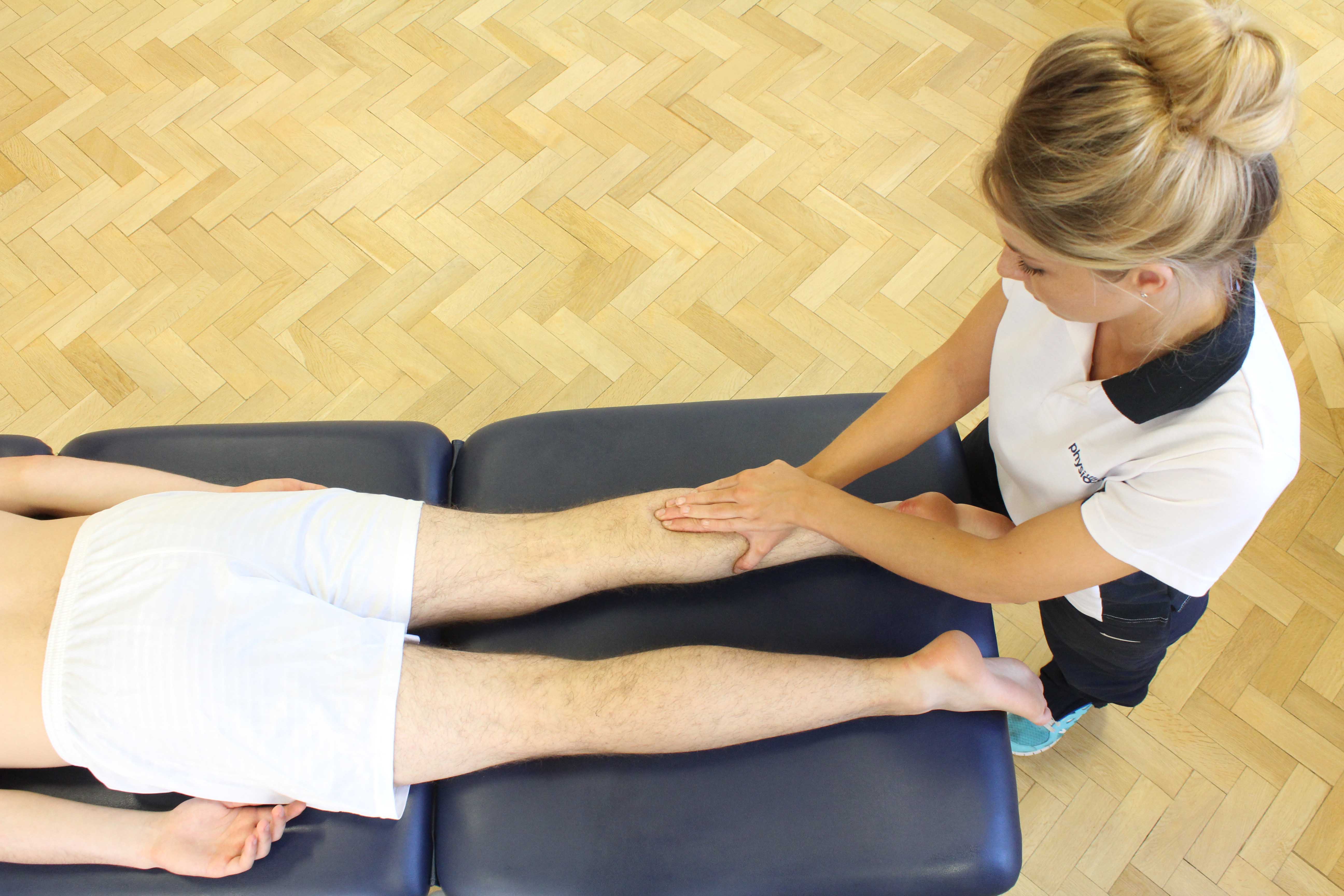Compartment Syndrome Surgery
Compartment syndrome surgery also known as a fasciotomy is the surgical procedure used to treat compartment syndrome. Fasciotomy surgery is effective in relieving symptoms such as pain, swelling and tightness that result from compartment syndrome. The most common area that is affected by compartment syndrome is below the knee. Physiotherapy after fasciotomy surgery is required to regain as much function as possible in the affected area.
Compartment syndrome can occur if there is increased pressure within a confined space in the body. Compartment syndrome affects areas of the body known as fascial compartments. Fascial compartments are formed by a special tissue that forms a membrane layer around muscles. Over time, the increased pressure causes blood flow to the area to be reduced therefore oxygen cannot be delivered effectively causing nerve and muscle damage. Compartment syndrome can occur in the hand, forearm, upper arm and buttocks. The most common compartment syndrome that occurs affects the front fascial compartment below the knee (anterior compartment syndrome)
Compartment syndrome can be either acute or chronic. Acute compartment syndrome is caused by injury such as fractures, burns, bites, crush injuries and where there is significant damage to the blood vessels and tissues. Chronic compartment syndrome is a result of overuse and can be caused by repetitive strain on the tissues and / or vigorous exercise. Compartment syndrome in the lower leg results in symptoms such as severe pain (even at rest), tightness, reduced mobility, decreased function and difficulty weight bearing.
 Above: Soft tissue massage of the soleus muscle by a MSK therapist
Above: Soft tissue massage of the soleus muscle by a MSK therapistSurgical procedure for compartment syndrome surgery
Fasciotomy surgery is required to relieve the pressure within the fascial compartment that surrounds the muscle to significantly reduce symptoms caused by below knee compartment syndrome. During fasciotomy surgery, the skin and fascial compartment are cut open so that the compartment pressure is relieved. Any dead tissues and muscle is removed at the same time. The wound is then left open to prevent the likelihood of pressure build up reoccurring. The wound is closed during a second surgery, usually 48-72 hours later once the swelling has gone down. Skin grafts may be required to close the wound.
If the diagnosis of compartment syndrome is made promptly and surgical release performed, the outlook is excellent for recovery of the muscles and nerves inside the compartment. However, the overall prognosis will be determined by the injury leading to the syndrome. If there is a delay in diagnosis, there can be permanent nerve injury and loss of muscle function. This is more common when injured person is unconscious or heavily sedated and incapable of complaining. Permanent nerve injury can occur after 12-24 hours of compression.
Physiotherapy after compartment syndrome surgery is important to maximise the success of the surgery, prevent the likelihood of problems resulting from compartment syndrome reoccurring in the future and to ensure the return of full or near to full function in the lower leg after the surgery.
 Above: Trigger point massage of the gastrocnemius muscle
Above: Trigger point massage of the gastrocnemius muscleSymptoms after compartment syndrome surgery
What you will experience following compartment syndrome surgery depends on the initial condition of your lower leg and the extent of injury you have suffered. You will experience pain, swelling and reduced mobility in your lower leg after compartment syndrome surgery. You will have a large wound in the area of the fasciotomy which may be covered with light dressing. It is not advised to cast, splint or compress the affected limb after the surgery. You will be advised to keep your leg elevated where possible and you will be provided with elbow crutches during the initial period after your fasciotomy surgery. Physiotherapy will begin as soon as possible after the operation to aid your recovery and prevent any problems occurring in the future. You will be unable to drive until you have full and painless function in your lower leg.
 Above: Trigger point massage of the gastrocnemius muscle
Above: Trigger point massage of the gastrocnemius musclePhysiotherapy after compartment syndrome surgery
Physiotherapy after fasciotomy surgery is important to ensure the success of the surgery. A comprehensive physiotherapy programme with Physio.co.uk will help you achieve the return of full or near to full function in your affected leg and also help prevent any future problems occurring that relate to compartment syndrome. Rehabilitation after compartment syndrome surgery can take up to 12 weeks. Physio.co.uk offers a programme that includes goals that are personal to you. Goals include:
- To restore a pain free lower leg
- To restore full range of motion (ROM)
- To restore full muscle strength
- To restore full muscle length and flexibility
- To improve cardiovascular fitness and muscle endurance
- To re-establish independence
- To prevent reoccurrence of symptoms relating to compartment syndrome
 Above: Soft tissue massage of the gastrocnemius muscle by MSK therapist
Above: Soft tissue massage of the gastrocnemius muscle by MSK therapist0-4 weeks
During the initial period of your recovery post fasciotomy surgery, your physiotherapy programme with Physio.co.uk will aim to protect the wound as well as controlling any pain and swelling that you are experiencing at this time.You may require elbow crutches in the early stages of your recovery for support and protection but these can be discontinued after the first week. At this time Physio.co.uk will also focus on maintaining mobility, range of movement and flexibility in your lower leg. Gentle strengthening activities may be included towards the end of the first month of your recovery. Your programme will also include activities that help keep strength and mobility in your unaffected leg for extra support.Your physiotherapy will include:
- Pain killers (to control pain)
- Elevation (to control swelling)
- Crutch training
- Partial weight bearing exercises (progress to full weight bearing)
- Passive (assisted) range of movement exercises for affected leg (knee, ankle etc)
- Strengthening and range of movement exercises for unaffected leg
- Upper limb activities
- Gentle strengthening activities for muscles in lower limb (calf, hamstring, quadriceps)
5-8 weeks
After the first month of your recovery, your physiotherapy programme with Physio.co.uk will continue to control for any pain and swelling you may still be experiencing at this time. Your physiotherapy programme will continue and progress activities from previous weeks with the aim to improve strength, flexibility, and function in your affected and unaffected legs. Cardiovascular activities can be included in your rehabilitation after the first month with exercises such as swimming and cycling. Your physiotherapy will include:
- Pain killers (to control pain)
- Elevation (to control swelling)
- Full weight bearing activities
- Gait training (walking)
- Proprioception training (balance)
- Active range of movement exercises
- Flexibility exercises
- Strengthening exercises for muscles in affected and unaffected leg (calf, hamstring, quadriceps, tibialis anterior etc)
- Hydrotherapy
- Static bicycle
9-12 weeks
After three months of successful physiotherapy with Physio.co.uk, your programme will continue to focus on regaining full function and strength in your lower leg. It is also necessary to continue to progress exercises that improve the strength and range of movement in your knee, hip, ankle as well as unaffected leg. Physio.co.uk will continue to progress activities that improve your cardiovascular fitness and muscle endurance and it will be now safe to return to running. The main aim at this time will also be to return full and painless function in your lower leg. Your physiotherapy will include:
- Gait training (walking)
- Proprioception training (balance)
- Range of movement exercises
- Flexibility exercises
- Strengthening exercises for muscles in affected and unaffected leg (calf, hamstring, quadriceps, tibialis anterior etc)
- Hydrotherapy
- Static bicycle
- Jogging
Summary
Compartment syndrome surgery also known as a fasciotomy is the surgical procedure used to treat compartment syndrome.Compartment syndrome can occur if there is increased pressure within the fascial compartments of the body. The most common compartment syndrome that occurs affects the front fascial compartment located below the knee. Fasciotomy surgery is effective in relieving symptoms such as pain, swelling and tightness that result from compartment syndrome. Fasciotomy involves an incision being made into the skin and the compartment membrane with the aim to relieve the excess pressure that has built up within the compartment. Physiotherapy with Physio.co.uk after compartment syndrome surgery is crucial to ensure the success of the surgery, prevent the likelihood of any future problems and to help you achieve the return of full or near to full function within your lower leg. Commitment to a personal physiotherapy programme with Physio.co.uk will allow a more rapid return to everyday activities, work, hobbies, and sport. Call Physio.co.uk now on 0330 088 7800 for more information or to book an appointment please contact us.

 0330 088 7800
0330 088 7800

































